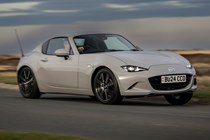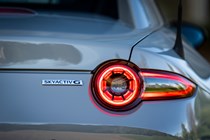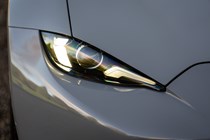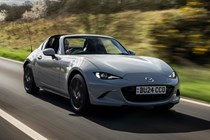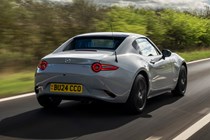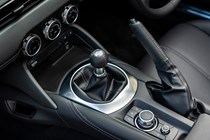
Mazda MX-5 RF engines, drive and performance
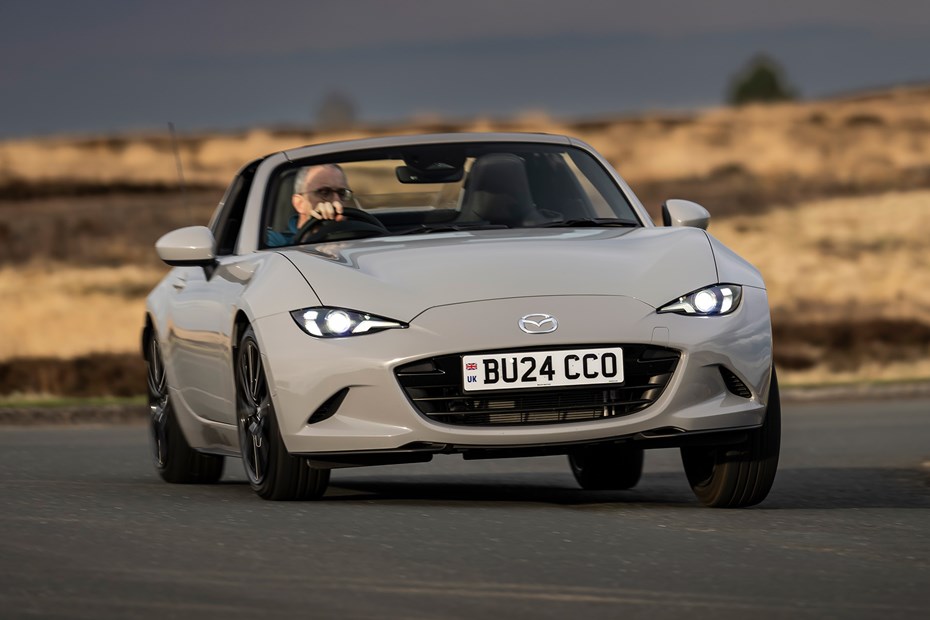
- Two naturally-aspirated engines on offer
- Larger 2.0-litre motor delivers best performance
- All versions are slower to 62mph than equivalent soft top
Petrol engines
The Mazda MX-5 isn’t the fastest car in the world, and that’s fine. It’s geared more towards bringing joy to owners when they’re zipping down a winding road than winning drag races. The RF weighs 40-45kg more than the MX-5 soft-top, which makes it ever so slightly slower.
Cars with the 2.0-litre engine feel markedly quicker than the 1.5, so that’s the one to go for if you’re in a hurry. A 184hp 2.0-litre MX-5 RF will get from 0-62mph in 6.8 seconds (or 7.9 seconds with the optional automatic gearbox), and go on to a top speed of 137mph (124mph in the auto). It’s more powerful on paper than the 1.5, but it’s the higher torque figure of 205Nm that helps this engine feel more muscular and urgent through the middle of the rev range.
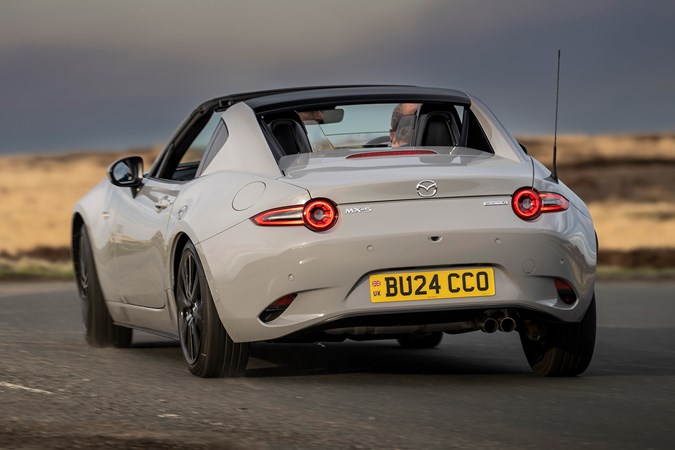
Although it’s 1.9 seconds slower to 62mph (8.7sec) and has a lower top speed of 126mph, some drivers prefer the smaller, manual-only 1.5-litre engine as it feels more eager to rev. With 132hp and a lower 152Nm of torque on hand, you’ll notice the difference when faced with a steep hill, but whichever engine you pick, you’ll be having too much fun to care.
The six-speed manual on both engines is a joy to use, with its stubby gearlever, short throw and mechanical feel to its gearchanges.
What’s it like to drive?
- Nimble handling makes the MX-5 RF a joy to drive
- Upgraded performance parts on 2.0-litre models
- Remains fun to drive, if a little compromised over the soft-top
The Mazda MX-5 RF is wonderfully simple and fun to drive. There are no drive modes to choose from and, like the soft-top MX-5, the RF is a car with nimble, involving and engaging handling at any speed.
To counteract the slightly higher centre of gravity created by the heavier roof mechanism, it has been given marginally firmer suspension settings than the soft-top MX-5. Plus, with recalibrated power steering, there’s slightly better feedback through the wheel.
All 2024 2.0-litre Mazda MX-5 RF models come with a new limited-slip differential as standard, which enables slightly more precise handling in tighter corners and especially in slippery conditions. Choose the 2.0-litre in the top two trim levels and it also comes with firmer Bilstein Sport suspension and a front strut brace in the engine bay, offering even tighter body control.The latest cars also come with Recaro sport seats in top trim, which do well to keep you in place as the car’s body rolls through corners.
Ride comfort hasn’t been sacrificed with these tweaks but the suspension struggles to contain the weight at higher speeds, with the RF’s bodyroll being more pronounced than on the equivalent roadster.
That said, the basic formula is still here: a softly-sprung two-seater sports car that feels light on its feet. The MX-5 RF simply allows you to have fun without having to go at high speeds, while part of the fun is trying to maintain momentum, making full use of that wonderful manual gearbox.


